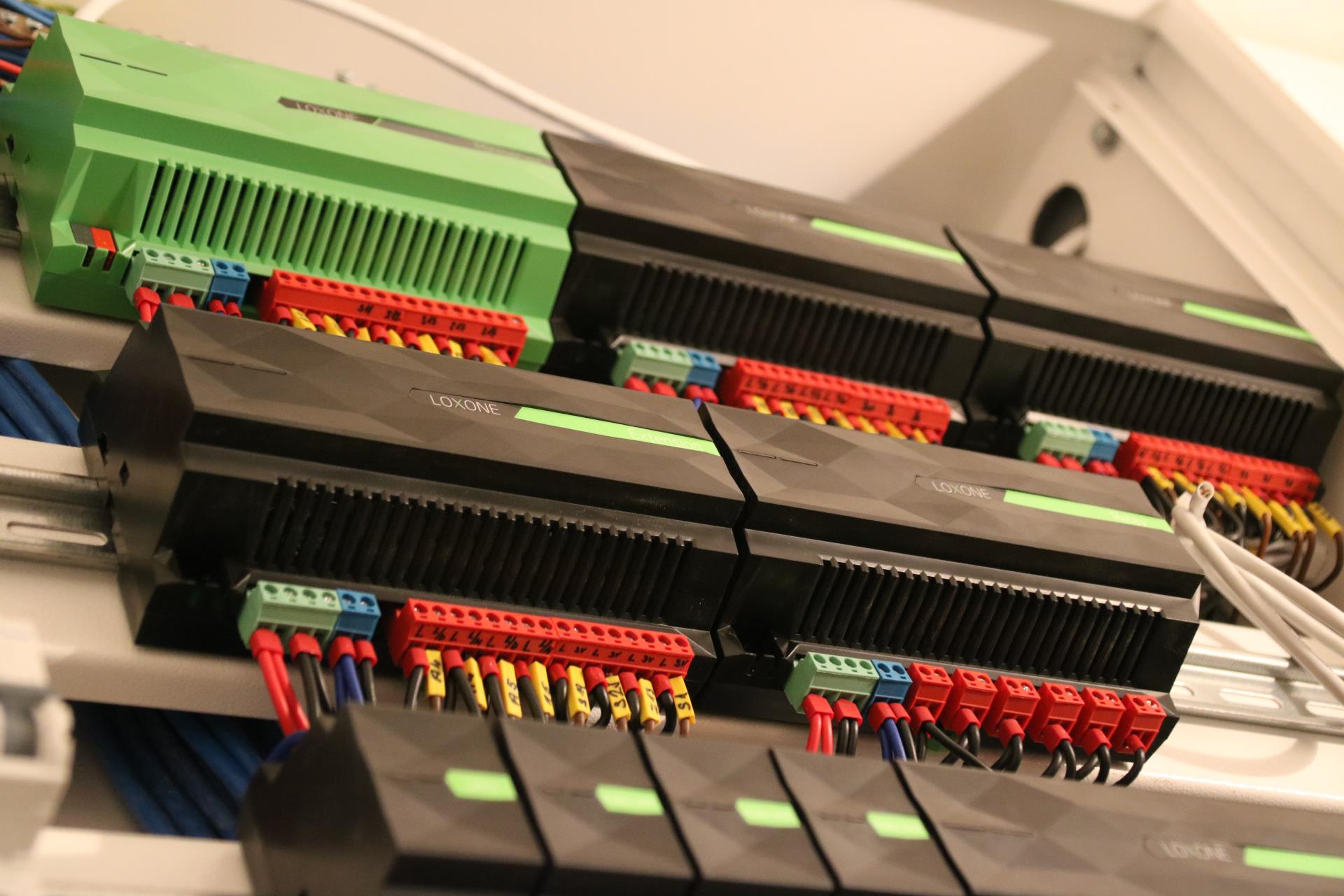This story dates back to the year 2014. At that time the main house construction work was already in progress and I was finalising my electricity plans. I had a clear idea about what I want where, but the list of things I would love to control kept constantly growing with every additional scenario I wanted to cover.
Still, my initial thinking wasn’t anything more than conventional electricity installation with just few extras solved through programmable or impulse relays for complex areas like bathroom/toilet ventilation logic of stairway illumination. I was pretty much convinced that this is the right way to go, knowing that there are plenty other areas apart from the electricity and networking I need to explore, properly plan and document. Also, any critical fail scenarios would mean that the core functionality would be still up and running somehow.
My conventional electricity plans were almost final, the focus concentrated to the design of the switches and sockets. Here I got the first hint about the intelligent installation. Choosing the right wiring accessories (switches/sockets) was always a triangle of design, features and price. Now because of the higher quantities of all the wiring accessories that are necessary for complete house install, the price played significant role on the overall quote. While doing different calculations I suddenly found out that my preferred model does not have the full functionality I always wanted. Just to explain, I don’t want to look too nerdy here, but to illustrate the level of detail, as an example I couldn’t stand are light dimmers that do set and recall back your last light brightness setting every time you want to switch on the light. That was driving not only me crazy and the fact that dimmers that can have this memory setting customized looked ugly, and most of the nice looking were not able to start with the full brightness on the first click, was the indication to look for more customizable solution. Then another trouble was on the planned corridors and stairways, where I did not want the standard double-pole crossed switch solution in which you never know the direction of the switch to turn on/off the lights. Combining this with some ambient night LED backlighting would be making the conventiona setup even harder to control. And finally, I always loved the hotel feature where your lights and things you don’t need are being turned off as soon as you leave. So I was back at the very beginning. I am not saying that the following list of features in not possible to solve with conventional electric install, but it is definitely becoming difficult. And surely not flexible enough to adopt to any future needs.

For instance:
- Dimmers in each room, controlled by push-buttons from other sides of the room (bed side, door side)
- Push-buttons combined with impulse relays (DIN) to have nicer functions in hallways and stairs
- Countdown timers for WC and bathroom ventilation
- Roller blinds easy controllers
- PIR sensors to trigger LED night lights
- Hotel-like central light shutdown on exit button
Definitely all above is possible, but you’ll have to design the most of the logic before you make the installation and any further tweaks, changes or customizations would be very difficult to implement. And for such complex scenarios even the conventional installation becomes costly.
The more advanced features (like water leak monitoring, garden water valve and socket control, and window and motion sensors) were planned to be a part of the system, the stronger I felt the need for some more intelligent control. As soon as you add things like electrical VELUX blinds or roller shutters, electrically operated roof windows, retractable awnings or automated garden watering system, you will find very difficult to cross connect these isolated systems and bring them to cooperate.
For instance, you might want to retract all awnings on the terrace, close all roof windows, and bypass garden watering in case of a rain. Or when you are about to leave the house, it would be good idea to close the water to the taps located outside the house and do the same with the external electricity sockets. And how about some off-peak heating setting when you leave, or disabling some electricity sockets inside of the house to prevent some unwanted stand-by consumption? Or how about strong wind protection for your awning shades and blinds?
Long story short, with the conventional installation you would end up having multiple systems, each with different control unit (another thing to care about) and probably a box of various remote controls. Yes, it’s the salesman’s preferred option as they can offer you out-of-box products with well-known installation process and quick after-install demo. Easily achievable goal and quick monetary return for them. Who cares that every roof window will have its own rain sensor, and probably a similar one will have the motorized awning and an additional for sure comes with garden watering system. Or another example of the hassle on the conventional install. The illumination threshold will need to be adjusted inside of every conventional movement sensor you might have for automated lights control that should not go on during the day. Or imagine scenarios where you need to get to every room to make the blinds shut before you leave the house. That was big “NO” for me since the very beginning.
What if all this could be controlled centrally. Things would be much easier to design and maintain. And not only that. A lot of clever ideas and improvements will most probably come up only after you live in your house for a while. With the smart home automation in place, any behavior can be changed pretty easily, and you can let the house control the daily routines by itself as if they were auto-piloted. And if you decide to do things differently one day, just do it as you want. You can always make your personalized setting override as if it was a conventional setup. Welcome to the smart home world!
See my ideas I have implemented so far to give you some guidance.
- Electricity/Lights to be turned off when you leave: Putting your home into low consumption state
- Automated blinds: Central open, close, or automated based on the sun position
- Keyless access control: Finger print integration, + Motorized locks
- Alarm function integrated: Sensors, siren, cameras, behaviours, actions, …
- Smoke alarm, water leak alarm, …
- Typical light scenarios (Hall, Entrance, Stairs, WC/Bathroom, Low light intensity during night time)
- Special light scenarios (Lights to increase when movement is detected, and then return back to the lower state)
- AV Media control
- Consumption monitoring (Electricity, Gas, Water), HDO
- Garden watering: Sprinklers, pump, zones, soil humidity…
- Weather interactions: Wind speed, Rain, Temperature, humidity (air, soil)
- New mail-in-the-box notification
- Velux windows control
- Intercom
- Multi-room audio
More things to come soon ….


